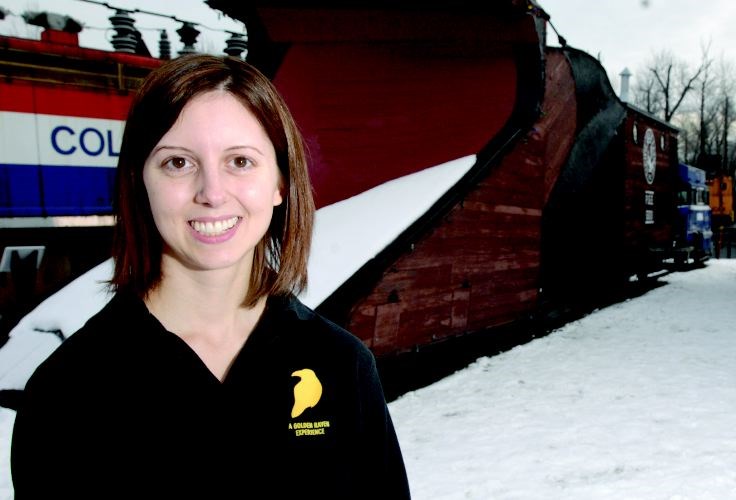A young curator is now in place at the Railway and Forestry Museum thanks to government incentives to get youth working.
The program bearing that name - Get Youth Working - was part of the reason Julianna Weisgarber is now the first mate at the facility. Executive director Ranjit Gill said there was little money for attracting talented applicants to the vacant position at the museum, but a little extra cash incentive from the fund made it possible.
"As a not-for-profit organization, the ability to hire Julianna is an honour for the museum," said Gill, listing Weisgarber's previous stint as a museum summer student, her anthropology degree from UNBC, and her additional training in a specialized University of Victoria program as reasons they had hopes for this candidate.
Weisgarber said she fell in love with the Railway and Forestry Museum during her summer employment there, and it shaped her career desires.
"I knew it would be difficult to come back here," she said, "so the Get Youth Working program has been wonderful...I am really appreciative."
"We really appreciate the financial help and we really appreciate Julianna," said Gill. "We have seen the benefits of the Get Youth Working Program and we look forward to [more hirings] in the future."
The program was set to end but due to popular demand, and a sense that it is succeeding at getting young people - a challenging employment demographic - into gainful jobs. Parliamentary secretary for forestry John Rustad announced at the museum on Monday that the program will be extended so Weisgarber will not be among the last of those to benefit.
The program provides $2,800 in wages for each young person hired, up to a maximum of three people per firm. Each young person must be given a job with at least 30 hours per week, and at least three months duration.
Another $1,000 per student is also available specifically for training them into that position.
Rustad said there were 641 funding requests in the first wave, but the second wave brought almost 1,300 applications.
"You need to have the workforce so companies can succeed," said Rustad, who added that government data indicates a million B.C. job openings will need filling between now and 2020. The natural resources sector is the source of the highest demand, but the youth works program is open for all kinds of jobs because the white collar professions need people as critically as the blue collar trades.
"As northerners we are facing some labour shortages and this is one way we are helping take care of that," he said. This channels young people into their chosen fields and provides practical experience to go with their schooling.
Any employer interested in learning more about hiring youth and using this program to help pay for it can visit the program's website at www.getyouthworking.ca.



